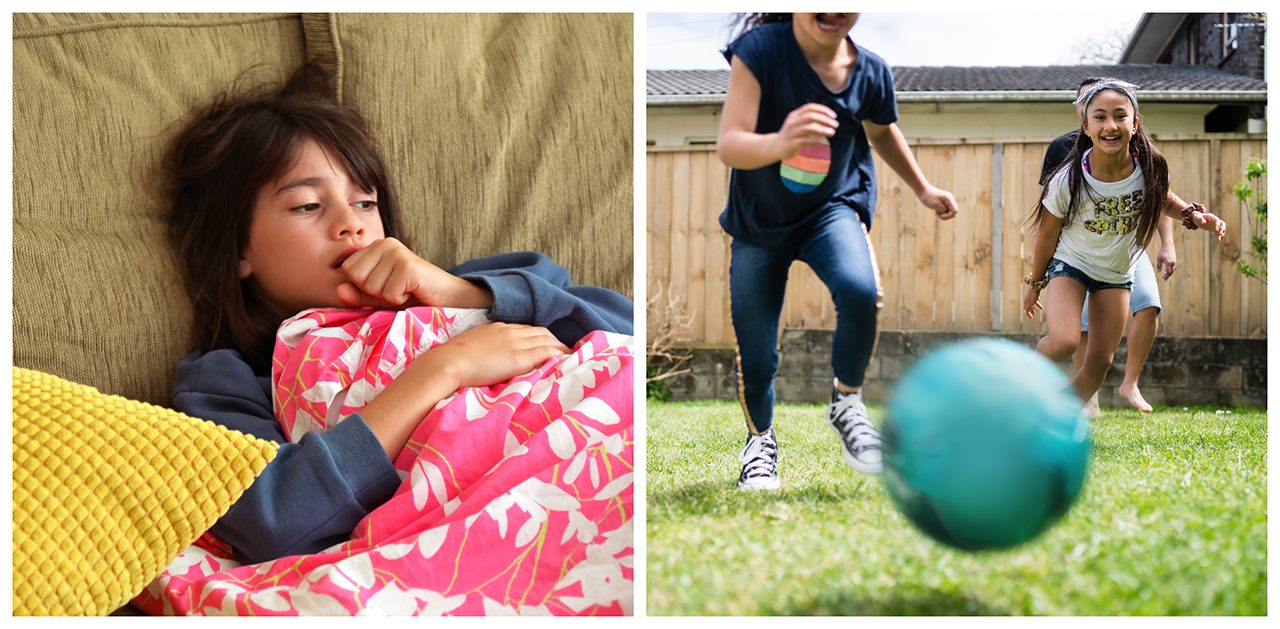Back To Activity & Sport After COVID-19
Back To Activity & Sport After COVID-19
Guidance for children and teens returning to normal activity and sport after having COVID.
When can children and teens return to activity and sports after COVID-19?
For children and teens who've had mild COVID (or no symptoms)
If your child has already gone back to physical activity on their own, and has no symptoms, that's fine. They can continue as usual.
Children and teens have had mild COVID if they had:
- less than 4 days of a fever
- less than 1 week of muscle aches, chills and significant tiredness (lethargy)
When should they return to activity and sport?
- when they've completed isolation
- when their symptoms are gone
- when they can do normal daily activities - like showering, getting dressed, walking around the house
How quickly should they return to active play and sport?
- if your child is under 12 years, they can do any activities and sport they feel like doing - be guided by them
- if your child is older than 12 years, consider a gradual return to physical activity and sport
See below - gradual return to physical activity and sport
For children and teens who've had moderate COVID
If your child has already gone back to physical activity on their own, and has no symptoms, that's fine. They can continue as usual.
Children and teens have had moderate COVID if they had:
- 4 days or more of a fever
- 1 week or more of muscle aches, chills and significant tiredness (lethargy)
- a hospital stay because of COVID-19
When should they return to activity and sport?
- when they've completed isolation
- when it's 10 days after their last symptoms
- when they can do normal daily activities - like showering, getting dressed, walking around the house
- when they've checked in with their family doctor
How quickly should they return to active play and sport?
- consider a gradual return to physical activity and sport
See below - gradual return to physical activity and sport
For children and teens who've had severe COVID
Children and teens have had severe COVID if they:
- needed intensive care treatment or
- were diagnosed with multisystem inflammatory syndrome in children (MIS-C)
Read about multisystem inflammatory syndrome in children (MIS-C)
When should they return to activity and sport?
The paediatricians or specialists caring for your child in hospital should give clear instructions about when your child can return to physical activity and sport. Your child may need a specialist outpatient appointment to check they are well enough to return to activity and sport.
Guide for a gradual return to physical activity and sport
The following is a guide for children and teens who:
- have had a mild illness and are over 12
- have had moderate illness
- can do normal daily activities - like showering, getting dressed, walking around the house
- have gone back to school
A return to physical activity will be different for different children. It's best it happens over at least a 7 day period. It may take longer for some children. Talk to your family doctor for more guidance. If you have a team coach, they may also be able to give you some guidance.
Before moving up a stage, make sure your child:
- is comfortable with the level of activity at the current stage
- has no symptoms
Stage 1 (2 days minimum)
15 minutes or less - light activity (walking, jogging, stationary bike) - intensity no greater than 70% of maximum heart rate. NO resistance training.
Stage 2 (1 day minimum)
30 minutes or less - add simple movement activities (such as running drills) - intensity no greater than 80% of maximum heart rate.
Stage 3 (1 day minimum)
45 minutes or less - progress to more complex training - intensity no greater than 80% maximum heart rate. May add light resistance training.
Stage 4 (2 days minimum)
60 minutes - normal training activity - intensity no greater than 80% maximum heart rate.
Stage 5
Return to full activity/participation (contests/competitions).
When should children and teens pause a return to activity and sport?
If your child gets any of the following during exercise, stop the exercise immediately and seek medical help:
- chest pain
- shortness of breath
- feeling an unusually fast heart beat
- fainting during exercise
If your child is struggling with a return to activity and sport, it's important to seek specific advice about the best way for your child to do this. This might be through your doctor, a physio or the coach.
This page last reviewed 14 June 2022.
Do you have any feedback for KidsHealth?
If you have any feedback about the KidsHealth website, or have a suggestion for new content, please get in touch with us.
Email us now
